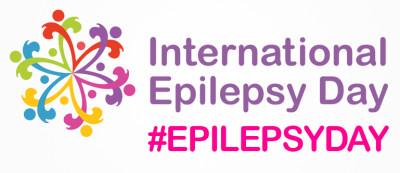Epilepsy is a group of related disorders characterized by a tendency for recurrent seizures. There are different types of epilepsy and seizures. Epilepsy drugs are prescribed to control seizures, and rarely surgery is necessary if medications are ineffective.
While many types of repetitive behavior may represent a neurological problem, a doctor needs to establish whether or not they are seizures.
Generalized seizures: All areas of the brain (the cortex) are involved in a generalized seizure. Sometimes these are referred to as grand mal seizures.
- The person experiencing such a seizure may cry out or make some sound, stiffen for several seconds to a minute and then have rhythmic movements of the arms and legs. Often the rhythmic movements slow before stopping.
- Eyes are generally open.
- The person may appear to not be breathing and actually turn blue. This may be followed by a period of deep, noisy breathes.
- The return to consciousness is gradual and the person may be confused for quite some time — minutes to hours.
- Loss of urine is common.
- The person will frequently be confused after a generalized seizure.
Partial or focal seizures: Only part of the brain is involved, so only part of the body is affected. Depending on the part of the brain having abnormal electrical activity, symptoms may vary.
- If the part of the brain controlling movement of the hand is involved, then only the hand may show rhythmic or jerky movements.
- If other areas of the brain are involved, symptoms might include strange sensations like a full feeling in the stomach or small repetitive movements such as picking at one’s clothes or smacking of the lips.
- Sometimes the person with a partial seizure appears dazed or confused. This may represent a complex partial seizure. The term complex is used by doctors to describe a person who is between being fully alert and unconscious.
- Absence or petit mal seizures: These are most common in childhood.
- Impairment of consciousness is present with the person often staring blankly.
- Repetitive blinking or other small movements may be present.
- Typically, these seizures are brief, lasting only seconds. Some people may have many of these in a day
Prevalence of Epilepsy in Nigeria
Epilepsy is a problem in Nigeria but prevalence data is lacking.
The epilepsy prevalence for a rural community was 20.8/1000
The epilepsy prevalence for a semi-urban community was 4.7/1000
What Are the Treatments for Epilepsy?
The majority of epileptic seizures are controlled by medication, particularly anticonvulsant drugs. The type of treatment prescribed will depend on several factors, including the frequency and severity of the seizures and the person’s age, overall health, and medical history. An accurate diagnosis of the type of epilepsy is also critical to choosing the best treatment.
- Drug Therapy
Many drugs are available to treat epilepsy. Although generic drugs are safely used for most medications, anticonvulsants are one category where doctors proceed with caution. Most doctors prefer to use brand-name anticonvulsants, but realize that many insurance companies will not cover the cost. As a result, it is acceptable to start taking a generic anticonvulsant medication, but if the desired control is not achieved, the patient should be switched to the brand-name drug.
The choice of drug is most often based on factors like the patient’s tolerance of side effects, other illnesses he or she might have, and the medication’s delivery method.
Although the different types of epilepsy vary greatly, in general, medications can control seizures in about 70% of patients.
Side Effects of Epilepsy Drugs
As is true of all drugs, the drugs used to treat epilepsy have side effects. The occurrence of side effects depends on the dose, type of medication, and length of treatment. The side effects are usually more common with higher doses, but tend to be less severe with time as the body adjusts to the medication. Anti-epileptic drugs are usually started at lower doses and increased gradually to make this adjustment easier. One of the best rules in medicine is to ”go low and go slow.”
There are three types of side effects:
Common or predictable side effects. These are common, nonspecific, and dose-related side effects which occur with any epilepsy drug, which affects the central nervous system. These side effects include blurry or double vision, fatigue, sleepiness, unsteadiness, and stomach upset.
Idiosyncratic side effects. These are rare and unpredictable reactions which are not dose-related. Most often, these side effects are skin rashes, low blood cell counts, and liver problems.
Unique side effects. These are those that are not shared by other drugs in the same class. For example, Dilantin and phenytoin (Phenytek) can cause the gums to swell and valproate (Depakene) can cause hair loss and weight gain. Your doctor will discuss any unique side effects before prescribing the medication.
- Ketogenic Diet
This is one of the oldest treatments for epilepsy, and helps lessen seizures.
- Alternative Treatments
Biofeedback, melatonin, and large vitamin doses can help.
- Vagus Nerve Stimulation
There is no cure for epilepsy, but medications may help keep symptoms under control.
- New Epilepsy Treatments
Treatments for epilepsy have come a long way in the last decade. Doctors have more than twice as many epilepsy medications to choose from than they did 10 years ago.
- Epilepsy Drugs for Children
There are a wide number of medications available for treating epilepsy in children, and advances in the past years have made a difference.
- Multiple Subpial Transection (MST)
Sometimes, brain seizures begin in a vital area of the brain — for example, in areas that control movement, feeling, language, or memory.
- Temporal Lobe Resection
A temporal lobe resection is a surgery performed on the brain to control seizures. In this procedure, brain tissue in the temporal lobe is resected, or cut away, to remove the seizure focus.
- Lesionectomy
Lesionectomy may be an option for people whose epilepsy is linked to a defined lesion and whose seizures are not controlled by medication.
- Functional Hemispherectomy
This procedure generally is used only for people with epilepsy who do not experience improvement in their condition after taking many different medications and who have severe, uncontrollable seizures.
- Corpus Callosotomy
A corpus callosotomy, sometimes called split-brain surgery, may be performed in people with the most extreme and uncontrollable forms of epilepsy, when frequent seizures affect both sides of the brain.
- Extratemporal Cortical Resection
An extratemporal cortical resection is an operation to resect, or cut away, brain tissue that contains a seizure focus.
Drug Treatments for Essential Tremor
With the use of medication, people with essential tremor may see improvement in their ability to control their tremor and improvement in activities such as drinking from a cup or using food utensils.











